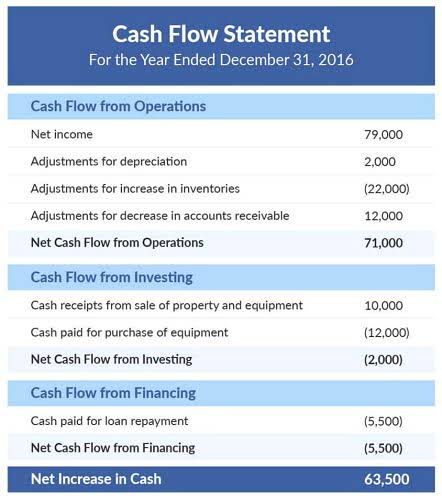
Review your accounts receivable, clean up your ledger, and start using the direct write-off method to keep your financials lean and honest. The faster you write off dead weight, the clearer your financial picture becomes. The most important thing to remember when working with the allowance methods for bad debt is to know what you have calculated! Once you figure a dollar amount, ask yourself if that amount is the bad debt expense or the allowance. If it is the allowance, you must then figure out how much bad debt to record in order bookkeeping to get to that balance.
How to calculate bad debt expenses using the allowance method
The Direct Write-Off Method is a simple approach to accounting for bad debt. Under this method, bad debt is recognized and written off only when it is determined to be uncollectible. When a specific account is identified as bad debt, the company records a bad debt expense and reduces accounts receivable by the same amount. On the other hand, the Allowance Method involves estimating uncollectible accounts at the end of each accounting period. This method creates an allowance for doubtful accounts, which is a contra-asset account that reduces the total accounts receivable on the balance sheet. In the allowance method, businesses create an allowance for doubtful accounts, which serves as a contra-asset account on the balance sheet.
Our customers
The result of your calculation in the percentage of sales method is your adjustment to the AFDA balance. Customers’ likelihood to short pay or skip paying altogether is deeply related to how you communicate with them throughout the billing and payment cycle. As we’ll discuss later, improving your customers’ experience is critical for minimizing bad debt.
- But, if you run a small shop with only the occasional non-payer, and are more concerned with simplicity than perfect financial accuracy, it might be just fine.
- In January, it makes a sale of $10,000, expecting to receive the payment within 30 days.
- Each method has its pros and cons, and choosing the right method depends on the specific accounting needs and principles followed by the business.
- When a company recognizes a bad debt expense, it is recorded as an expense on the income statement.
- When using the percentage of receivables method, it is usually helpful to use T-accounts to calculate the amount of bad debt that must be recorded in order to update the balance in Allowance for Doubtful Accounts.
- The write off amount is debited as the expense in the period approved to write off in the income statement.
- As bad debts are anticipated and accounted for in advance, the income statement reflects a more consistent portrayal of a company’s financial health.
Small Businesses

By adhering to the matching principle and reflecting the net realizable value of receivables, this method offers a clearer picture of a company’s financial health and performance. Under this method, bad debt is recognized only when it becomes certain that a specific account receivable is uncollectible. Unlike the Allowance Method, which estimates bad debts in advance, the Direct Write-Off Method records bad debts as they occur.
Recap the Main Differences Between the Direct Write-Off Method and the Allowance Method
In this article, we’ll explore what bad debt expense is, how to find it, calculate it, and record it according to United States and IRS guidelines. In summary, the Direct Write-Off Approach offers a range of benefits that make it an attractive option for businesses seeking a simple, cash-based method of accounting for bad debts. In some tax jurisdictions, bad debt expense can only be recognized for tax purposes when it’s actually written off. The Direct Write-Off Method is compliant with such regulations, ensuring that businesses don’t face discrepancies between their accounting records and tax reports. For example, if a customer defaults on a payment of $500, the business simply debits the Bad Debt Expense account and credits Accounts Receivable for $500.
Potential Distortion of Financial Statements

You’ll need to decide how you want to record this uncollectible money in your bookkeeping practices. Imagine a small electronics store, Tech Haven, that sells products on credit. One of its customers, XYZ Corp., owes $5,000 but goes bankrupt and is unable to pay.

Is Inventory a Current Asset? (Answered)
The Direct Write-Off Method is simpler but less accurate, as it does not adhere to the matching principle and can result in significant fluctuations in reported earnings. On the other hand, the Allowance Method provides a more accurate picture of a company’s financial health by ensuring that bad debt expenses are recognized in the same period as the related sales. It also complies with GAAP and IFRS, making it the preferred method for most companies.

For instance, a small business owner who operates on a cash basis will find this method aligns perfectly with their overall accounting system. By implementing a robust credit policy and adopting proactive collection approaches, companies can mitigate the Accounting Security risk of bad debt expenses and improve their overall financial stability. In conclusion, understanding and applying the appropriate method for accounting for bad debt expense is vital for businesses. Each method has its pros and cons, and choosing the right method depends on the specific accounting needs and principles followed by the business. For businesses, the direct write-off is a simpler way to handle bad debt, and it must be used when dealing with unpaid accounts in federal taxes. The direct write-off method is easy to operate as it only requires that specific debts are written off with a simple journal as and when they are identified.
- Therefore it is not advised to use the Direct Write-off Method to book for the uncollectible receivables.
- For the taxpayer, this means that if a company sells an item on credit in October 2018 and determines that it is uncollectible in June 2019, it must show the effects of the bad debt when it files its 2019 tax return.
- For businesses that rarely encounter bad debts, the Direct Write-Off Approach is particularly advantageous.
- The direct write off method offers a way to deal with this for accounting purposes, but it comes with some pros and cons.
- For example, when companies account for bad debt expenses in their financial statements, they will use an accrual-based method; however, they are required to use the direct write-off method on their income tax returns.
Direct write off method GAAP compliance
By following the guidelines outlined in this article, you can effectively calculate and record bad debt expenses according to the United States and IRS guidelines. The direct write-off method may be right for some businesses, particularly those with minimal credit sales or those seeking simplicity in their accounting processes. However, for businesses that need to provide a clear and consistent financial picture to stakeholders, the allowance method may be more appropriate. Each business must consider its specific circumstances, including financial, tax, and regulatory requirements, before deciding on the best approach to handling bad debt. In each of these cases, the direct write-off method provides a clear-cut solution to direct write-off method handling bad debts. The two accounting methods used to handle bad debt are the direct write-off method and the allowance method.
Commenti recenti